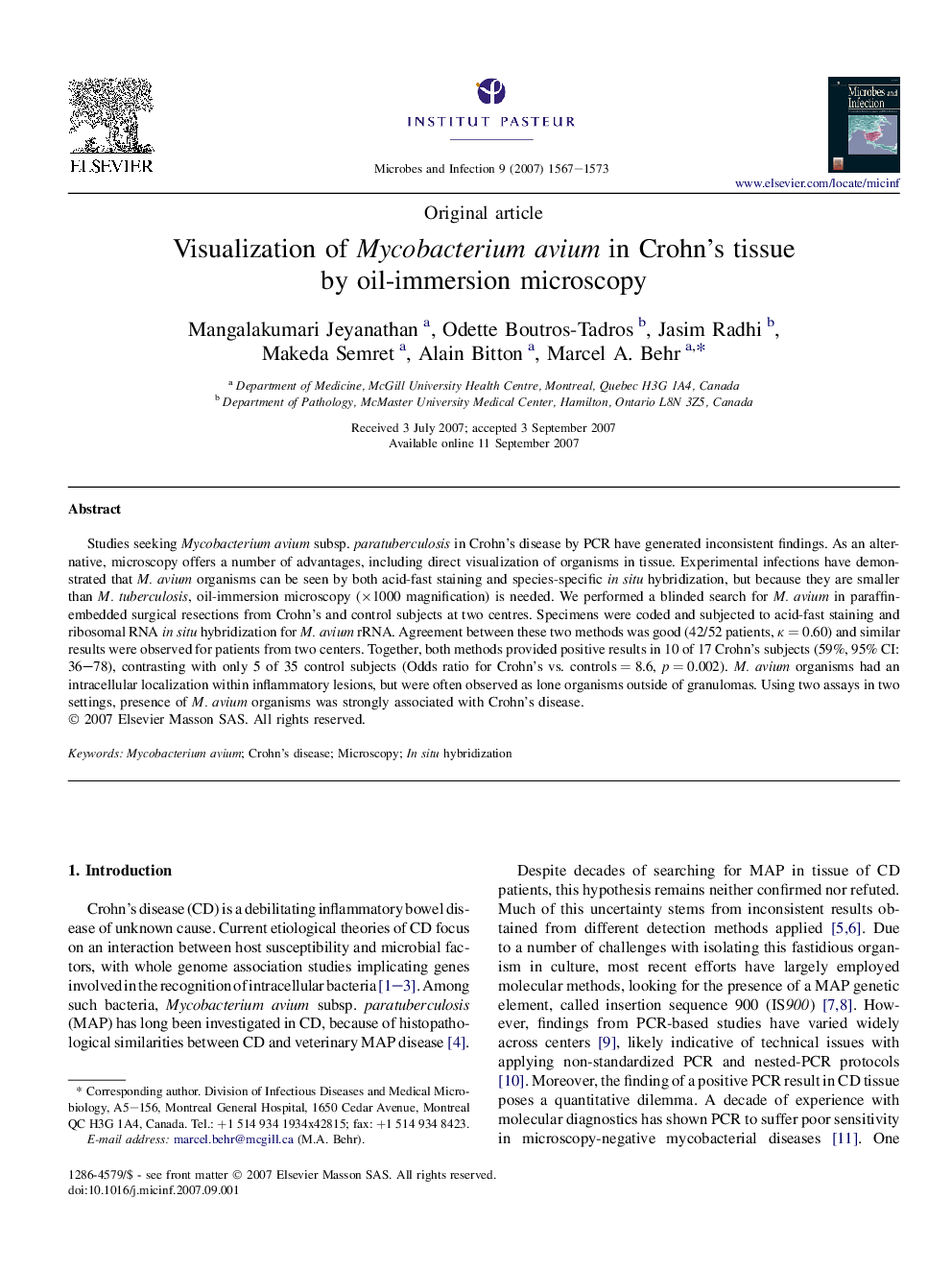| Article ID | Journal | Published Year | Pages | File Type |
|---|---|---|---|---|
| 3416011 | Microbes and Infection | 2007 | 7 Pages |
Studies seeking Mycobacterium avium subsp. paratuberculosis in Crohn's disease by PCR have generated inconsistent findings. As an alternative, microscopy offers a number of advantages, including direct visualization of organisms in tissue. Experimental infections have demonstrated that M. avium organisms can be seen by both acid-fast staining and species-specific in situ hybridization, but because they are smaller than M. tuberculosis, oil-immersion microscopy (×1000 magnification) is needed. We performed a blinded search for M. avium in paraffin-embedded surgical resections from Crohn's and control subjects at two centres. Specimens were coded and subjected to acid-fast staining and ribosomal RNA in situ hybridization for M. avium rRNA. Agreement between these two methods was good (42/52 patients, κ = 0.60) and similar results were observed for patients from two centers. Together, both methods provided positive results in 10 of 17 Crohn's subjects (59%, 95% CI: 36–78), contrasting with only 5 of 35 control subjects (Odds ratio for Crohn's vs. controls = 8.6, p = 0.002). M. avium organisms had an intracellular localization within inflammatory lesions, but were often observed as lone organisms outside of granulomas. Using two assays in two settings, presence of M. avium organisms was strongly associated with Crohn's disease.
